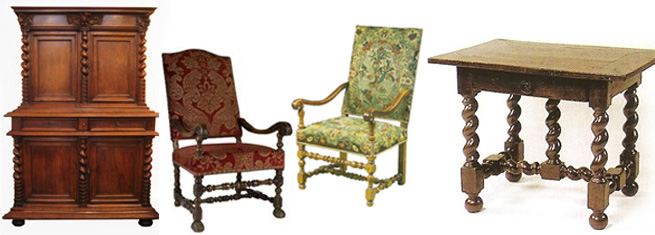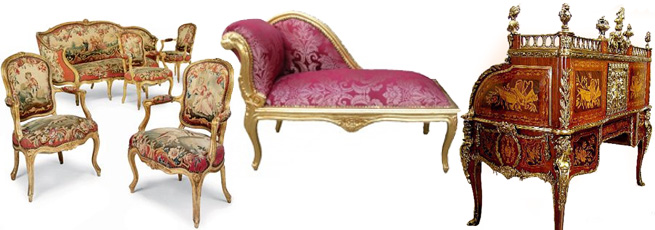When browsing the bidorbuy antique furniture section, you are likely to come across one or more of the famous four Louis: XIII, XIV, XV or XVI. Who are all these Louis, and why is the antique furniture bearing their names still sought after, centuries after they lived?

Well, all of them were at the throne of France in the period stretching almost two hundred years, from 1610 to 1792. More to the point for this post, all of them left their stamp on the contemporary arts and design, not because they took particular interest in motifs and patterns as such, but because, being absolute rulers, they had the power to state: “style, c’est moi”.
Experts say it’s not easy to tell the difference between furniture styles of this Louis and that. Here are some guidelines to help you.
Louis XIII furniture is monumental and heavy, characterised by geometric carvings (diamond point, pyramid patterns). Many describe this style as brooding and atmospheric. Typical design themes were spirals, bead turnings, and round, bun-type feet. Chairs were given armrests, higher backrests and wider seating spaces, becoming more comfortable. Padded fixed upholstery on chairs was one of the great inventions of this period.

Louis XIV is easier to recognize, for the “Sun King” was symbolically represented on furniture with sunbursts, the letter L and fleur-de-lis. Furniture of this period abounds in the Baroque curves, round forms, dynamic movement and symmetrically arranged dramatic sculptural elements. In general, furniture is more elaborate than in the previous period and made of finer materials. Still, the prevailing symmetry of compositions and the use of dark colours resulted in compositions characterised by balance, majesty and a degree of severity. The pieces introduced during Louis XIV reign include the writing table or desk and finely detailed chests.

Louis XV style is even more elaborate. Curves became curvier, patterns more extravagant. The dark palette was replaced with bright colours and pastels. Symmetry evaporated in favour of asymmetrical fanciful patterns with lots of swirling scrolls. Tortoiseshell and ivory were artfully inlaid to depict seashells, waves, foliage, as well as Oriental and exotic scenes. All in all, this style, also known as Rococo, introduced smaller furniture, with graceful, feminine lines and is touted as the most elaborate of the Louis styles.

Louis XVI furniture was in a more sober Neoclassical style. Straight, simple forms replaced the curves and symmetry returned. Furniture decorations became less ornate. Instead of the delicately pointed cabriole legs that characterised both Louis XIV and Louis XV pieces, a straight, tapered and sometimes fluted leg was preferred. If a curve is used, it is no longer the flowing S curve, but a shallow serpentine curve. Everything became more angular, especially commodes and buffets. Geometric designs became more prominent, though motifs of the natural world (garlands, urns, laurels, dolphins and eagles) were still in vogue. However, the natural grain of the woods was used to create patterns and design.

All the original furniture from this era was created by a handful of artisans using expensive materials, which is one of the reasons that they are very much sought after even today. Of course, modern homes are more likely to feature a character piece or two, rather than have a whole room furnished a la this or that Louis. Also, people of today are more likely to own a replica or a piece “in the style” of a particular Louis, rather than an original. In any case, the latter are as a rule consigned to museums.









